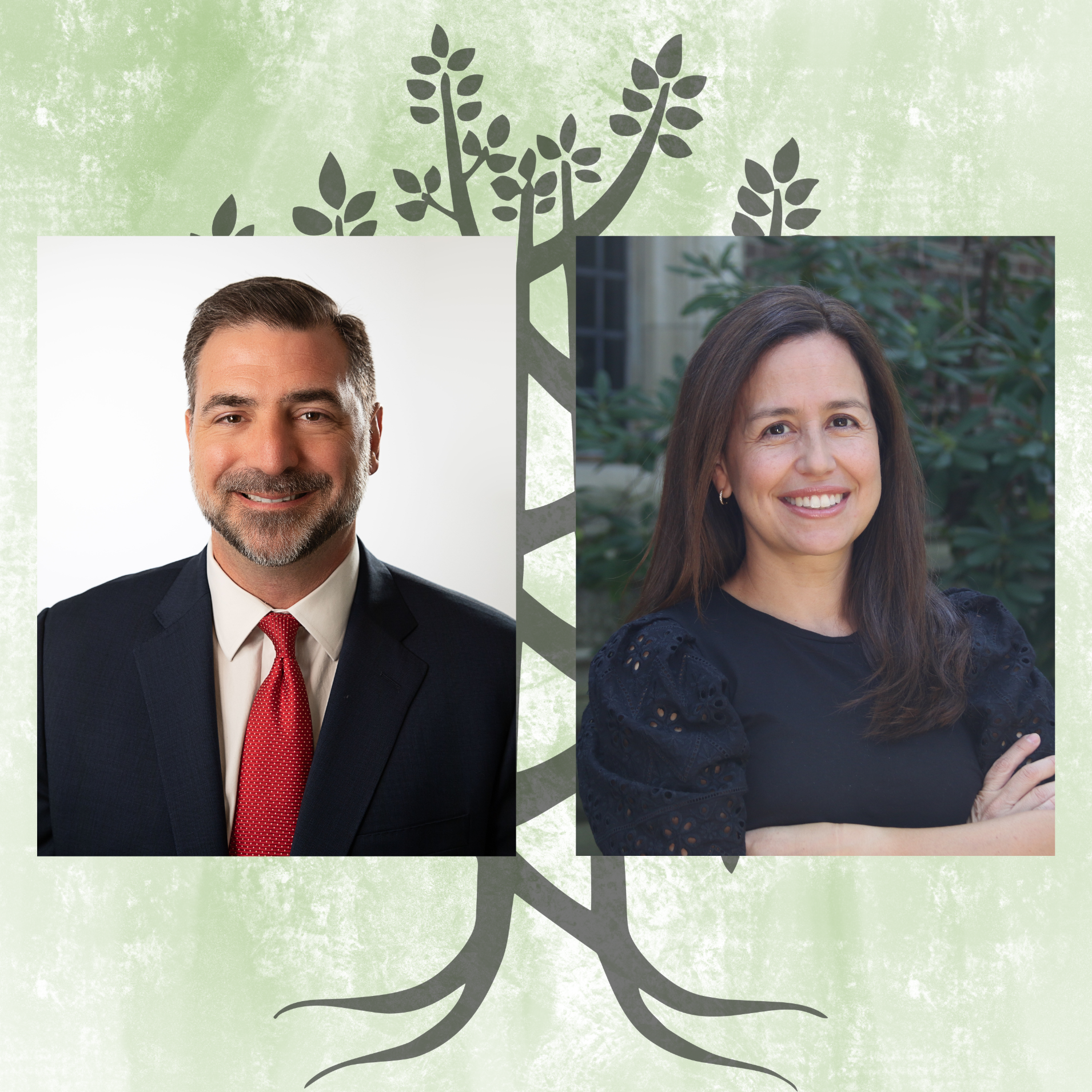
On two amazing nights earlier this year, lay leaders from Bethel AME’s Stewards Council and TBE’s Leadership Council came together to make connections between two great congregations and share insights aimed at strengthening both congregations during an incredibly difficult time.
After the “Fabulous Foursome” (as we called ourselves) met to plan the initiative, we brought our larger groups together on Zoom. In our first meeting together, we brainstormed a list of challenges that both of our congregations are facing. We narrowed the list to four broad topics, and in our second meeting, each participant chose the issue that sparked the most curiosity for them.
Here are some of the thoughts, feelings, and ideas that were generated in those meetings.
Question: What impact has the pandemic had on our spiritual experience?
Throughout the discussion, this group agreed that the pandemic impacted the collective and individual experiences of Bethel AME and TBE in three profound ways:
The pandemic encouraged a greater desire to be nearer to God.
The far-reaching uncertainty that the pandemic created placed a greater emphasis on the stabilizing qualities of the faith and spiritual traditions of our congregations.
Many of our congregants realized that weekly religious services, communal and individual prayers, communal and individual consolation and study of scripture provided a refuge wherein a deeper communion with God could be gained.
The pandemic revealed new ways that God could be present.
Prior to the pandemic, congregants of Bethel and TBE gathered in their respective places of worship and would have assumed that the presence of God came most effectively in and through more “traditional” and familiar spaces and venues.
In the early days of the pandemic, traditional assumptions of how and where God would and should show up were immediately challenged. While Zoom and the use of virtual services lacked the physical, in-person components of worship, many of our members found that God could still be present because the community gathered with a common purpose.
The pandemic revealed to both congregations that a spiritual encounter with God could still be felt and experienced despite the limitations of social distancing. Whether the venue was virtual or in-person, the true catalyst that ushered in the spiritual or religious experience was the common heart and purpose of creation seeking its creator.
The pandemic confirmed the foundational importance of spiritual and religious practices in our lives.
This group found that the pandemic confirmed that communal religious or spiritual experiences offered a reliable and stable refuge in the midst of chaotic circumstances. The ability to worship, mourn, celebrate and reflect in the presence of community before God validated and continues to validate the importance of having a spiritual aspect in our lives.
Question: What are the implications of the transition of Zoom to in-person meetings (or both/hybrid)?
This group wondered: What is the role of our physical buildings in this new era? If hybrid is here to stay, should tithing/dues be adjusted? How do we welcome new members and follow-up with new visitors? How will we meet people where they are and deliver a strong sense of community?
Both congregations found that online services were very successful at first because it was easy to attend. Then, when our buildings first re-opened, people didn’t really come. They had gotten used to the new way. But then, things evolved again and this group found commonalities:
- Congregants were tiring of “watching church.”
- Events like coffee hours and sermons were losing their impact.
- Clergy and administrative teams were spending a lot of time and resources trying to make the technology work well.
- Technology adds cost, so the flexible, hybrid model requires even more funding than before the pandemic.
- On the flip side, technology opened up remote worship and engagement from members who live far from our buildings – including some brand-new members and some members who had moved away and were overjoyed to have a restored connection to their beloved communities.
Ideas shared by the two groups included:
- Find or continue unique ways to allow remote participants to have informal conversations with each other around services or programs. TBE has had “Community Conversations” and Bethel AME has had “Coffee Hours” – those have worked!
- Offer remote participants live-streamed content vs. pre-recorded content whenever possible to deliver a sense of spontaneity and engagement.
- Create smaller communities that work remotely. Bethel AME has created interest groups that met once a month for nine months. Some of these groups have continued to pray together and get together socially.
- Find ways to include congregants who have moved away. Bethel AME has a new “Move Away Plan” and TBE’s families who live outside of New England have never been more a part of the main community.
Question: How are we caring for the non-physical health of our communities?
As we all settle into our “new normal,” the pandemic’s effect on everyone’s mental health remains in the headlines. This group discussed how our congregations have tried to help support members throughout the pandemic.
Mental health was a focus at TBE before the pandemic and we were able to quickly hire a social worker in the early days. In the “Pray for Me” Campaign at Bethel AME, several adults pray for one to two young people every day for a year.
This group connected on how mental health within our congregations was impacted. They discussed the term “languishing” as the New York Times article had just named the phenomenon. Members had been working from home, establishing new and different routines, and felt isolated. Commonalities in this group included how important it is to slow down and take time, have more empathy, and model self-care for people around us. There is still a stigma around mental health issues as it relates to therapy and seeking help, there is hope that asking for help becomes easier.
They then brainstormed some concrete ideas for how congregations could address this topic moving forward:
- Having consistent, engaging programs like book clubs, care checks, and bible study helps provide support to our congregations.
- Reminders that living in the present is key, having prayer partners is helpful, sharing experiences, and small groups encourage connection – all of which supports mental health.
- Being part of a religious community helps encourage happiness!
The group also wondered if our congregants know how to get help. TBE’s Caring Community team was mentioned as being very supportive. Bethel AME has services and resources for those who reach out, but there is a need for more education about services. One other thought that surfaced was the need for intergenerational support, where the elders could help younger members online.
Question: How do we/can we inspire engagement?
This is an “evergreen” issue! Both congregations tend to program based on life stage. Bethel AME’s couple’s ministry is strong, and TBE’s family programming is strong. Both have great programs to engage youth. Music is a central part of our prayer services.
Moving forward from the pandemic has brought an opportunity to engage our members in new ways. Some people are thrilled with Zoom and some people need an in-person experience to feel connected. Both organizations felt that it is important to get people back into our buildings to deepen engagement among and between the congregations.
Some of the ideas we shared include:
- Sharing impact drives connection: Bethel AME members explained that “Worship Arts” include all of the ways that worship is practiced: singing, dancing, and sign language. Like a “spiritual throughline,” these are the opportunities to manifest God in our lives and share with the larger group. The engagement in Worship Arts drives engagement within the congregation and with the church.
- Starting small can lead to greater engagement. Successful programming for couples at Bethel AME started very small – two couples grew the initiative. It’s now an important element of engagement.
- Embracing spirituality embraces and lifts people up, and can center our experiences. For example, during Wednesday Bible study at Bethel AME, leaders ask questions like, “How to find rest in God,” and “How did Sunday’s service lift participants?”
- Programming around secular interests, hobbies and even work attracts people who aren’t defined by their life stage at TBE, and can lead to individual and communal engagement.
- Individual outreach can “activate” engagement. TBE has noted how responsive individuals are when invited to join in by another member of the congregation or the clergy.
- Expanding life stage programming has inspired engagement from less active congregants at TBE. An uptick of learning programs for some of the more mature members has demonstrated wider-spread engagement.
While the ideas generated in all four groups were powerful, all of our members felt so lucky to have had this beautiful opportunity to learn from other Boston-area residents who, like us, are deeply committed to their congregation and their fellow congregants. It was an inspiring year, and we are in the midst of planning our next joint gathering – perhaps built around the joy of music, a trait shared by both congregations!


